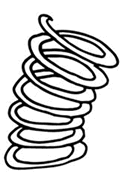
Grades 9-12

Don't have an account yet? Sign up for free
Don't have an account yet? Sign up for free

This lesson illustrates the differences between inventions and innovations. It discusses what entrepreneurs are and their role with inventions and innovations.
It’s such a pain to sharpen your pencil, isn’t it? And don’t you hate it when you can’t keep a window clean? Well, cartoonist Rube Goldberg can help you out.
Check out Rube Goldberg or How to Keep Shop Windows Clean
Part of the answer lies with entrepreneurs. Entrepreneurs are people who recognize opportunities to develop new products and start new businesses. Although Rube’s solutions are admirable, the entrepreneurs behind the development of the electric pencil sharpener and the squeegee had more success with solving those problems.
Invention versus Innovation
When entrepreneurs see an opportunity, they can do one of two things. They can develop either an invention or an innovation. An invention is a new product created by an inventor. When you think of inventions and inventors you probably think of big things like Thomas Edison and the light bulb or Alexander Graham Bell and the telephone. But, little inventions, like the eraser, also play big parts in our lives. 
An innovation is the introduction of an invention into a use that has economic value. Innovations change how people use preexisting products. You probably innovate in some way almost every day. Have you ever used a piece of gum to hold something together? Or have you ever used sock as a puppet? Well, that’s innovation. Some entrepreneurs believe that some innovations will be very popular on the market. Check out the web site below and answer the following questions.
https://lemelson.mit.edu/resources/richard-james
In that toy story, it required a person to develop the idea into a tangible marketable product, something Rube never cared to attempt. The willingness of an entrepreneurs to take a risk on a product depends largely on how successful the entrepreneur believes the product will be. A free market economy encourages entrepreneurship by allowing entrepreneurs the opportunity to make a profit on their ideas.
Check out these Amazing Gadgets and Inventions and see some inventions that these inventors could use an entrepreneur's help in developing.


Grades 9-12

Grades 9-12

Grades 9-12

Grades 9-12
